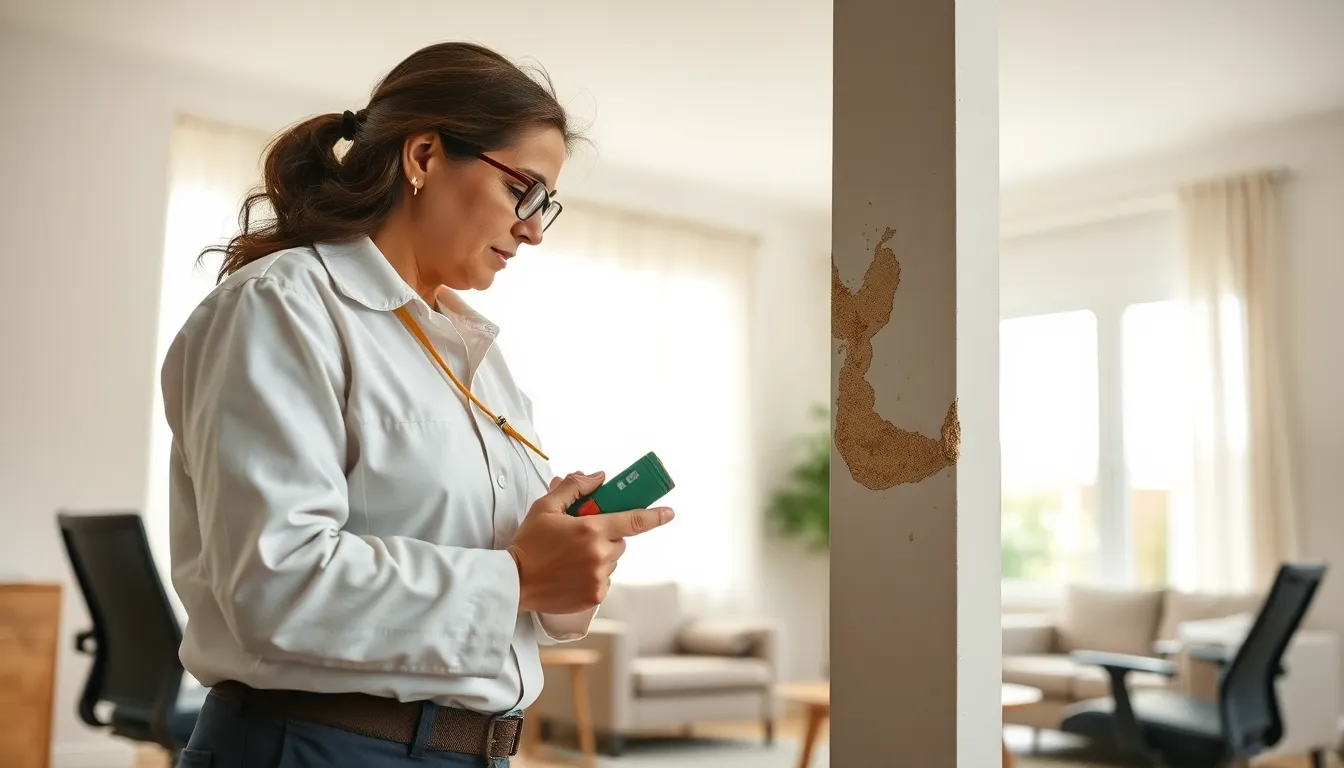Mold on drywall can feel like an unwanted houseguest you can’t seem to kick out. You know, the one who overstays their welcome and brings all sorts of baggage. It’s not just unsightly: it can pose serious health risks. In this guide, we’ll explore how to treat mold effectively, ensuring your home remains a cozy, mold-free haven. Buckle up as we jump into the nitty-gritty of mold management, complete with expert tips and a touch of humor. After all, if you can’t laugh at the mold lurking in your walls, what can you laugh at?
Table of Contents
ToggleUnderstanding Mold Growth

Mold is essentially a fungus that thrives in damp, humid conditions. It’s nature’s little recycler, breaking down organic matter, but when it shows up in your home, it can become a major headache. Mold spores are always in the air, waiting for the perfect conditions to sprout.
Once humidity levels rise and warmth prevails, those spores consider your drywall a five-star buffet. It’s typically the damp spots that attract mold, particularly in areas with poor ventilation, making it essential to understand its lifecycle to get a handle on controlling it.
Causes of Mold On Drywall
Mold on drywall often results from a few common culprits:
- Water Leaks: Whether from a leaky roof or plumbing issues, water leaks set the stage for mold to flourish.
- Condensation: Humidity can condense on walls, particularly in areas that lack insulation. Areas like basements, kitchens, and bathrooms are notorious for this.
- Poor Ventilation: Without proper airflow, moisture gets trapped in rooms, leading to an ideal environment for mold growth.
- Flooding: After a flood, drywall can absorb water, creating the perfect breeding ground for mold.
Identifying Mold Infestation
Spotting mold isn’t as simple as it might seem. It can be hiding in plain sight, or lingering just out of view. Keep an eye out for these telltale signs:
- Visible Growth: This can manifest as black, green, or even white spots on the drywall.
- Musty Odors: A persistent smell in the air can signal mold even if you can’t see it.
- Peeling Paint or Wallpaper: When mold attacks, it doesn’t just stop at the drywall: it can wreak havoc on your finishes too.
- Water Stains: If you notice brown or yellow stains, you could very well have a moisture issue that may lead to mold.
Steps To Safely Remove Mold From Drywall
If you’ve confirmed the presence of mold, it’s time to take action. Here’s a step-by-step plan to safely rid your drywall of this unwelcome guest:
- Gather Your Supplies: You’ll need gloves, a mask, a sponge, a spray bottle, detergent, and possibly a specialized mold remover.
- Seal Off the Area: To avoid spreading spores, seal off the contaminated area with plastic sheeting.
- Ventilate: Open windows and doors to maintain fresh air circulation. This doesn’t mean you should invite unintended guests: ensure no air from other rooms is venting into the affected area.
- Clean the Affected Area: Mix detergent with water in a spray bottle and apply it directly to the mold. Let it sit for a few minutes.
- Scrub Away: Use a sponge or cloth to scrub the molded area gently. Avoid abrasive materials that could damage the drywall.
- Rinse and Dry: Rinse with clean water and dry the area thoroughly to prevent moisture from returning.
- Dispose of Contaminated Materials: Safely dispose of any sponges or cloths used in the cleanup.
Preventing Future Mold Growth
Now that the mold has been taken care of, it’s time to set up defenses. Consider these preventive measures to keep your space mold-free:
- Regular Inspections: Check areas prone to moisture regularly. Identifying issues early can save you from future headaches.
- Manage Humidity: Using a dehumidifier can help control moisture levels, especially in areas like the basement or bathroom.
- Improve Ventilation: Ensure that windows are adequately opened and exhaust fans are functional, allowing air to flow freely.
- Fix Leaks Promptly: Don’t wait until water damage becomes visible: fix leaks as soon as they’re detected.
When To Call A Professional
In some instances, it’s better left to the experts. If the mold covers a substantial area, often classified as more than ten square feet, or if you have health concerns, reaching out to professionals may be your best bet. Also, if mold is found in HVAC systems, this is a clear sign that expert intervention is necessary. They have specialized equipment and training to handle mold efficiently, ensuring both your safety and long-term results.


